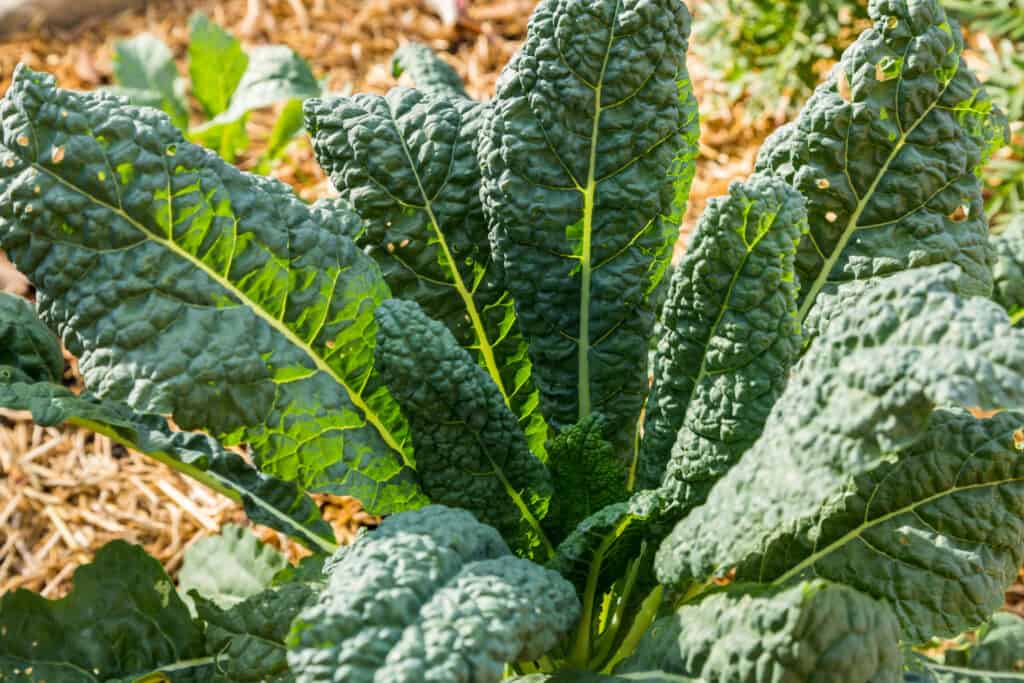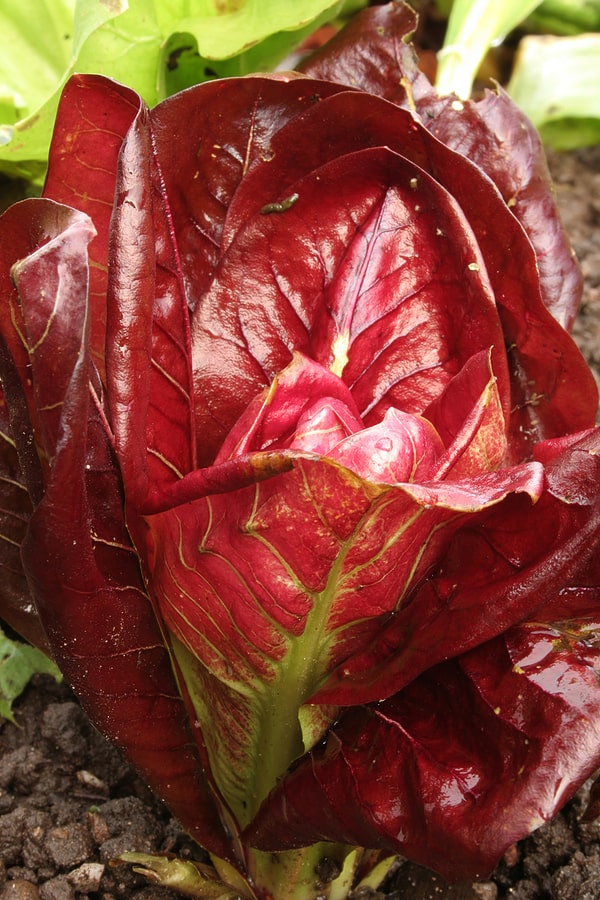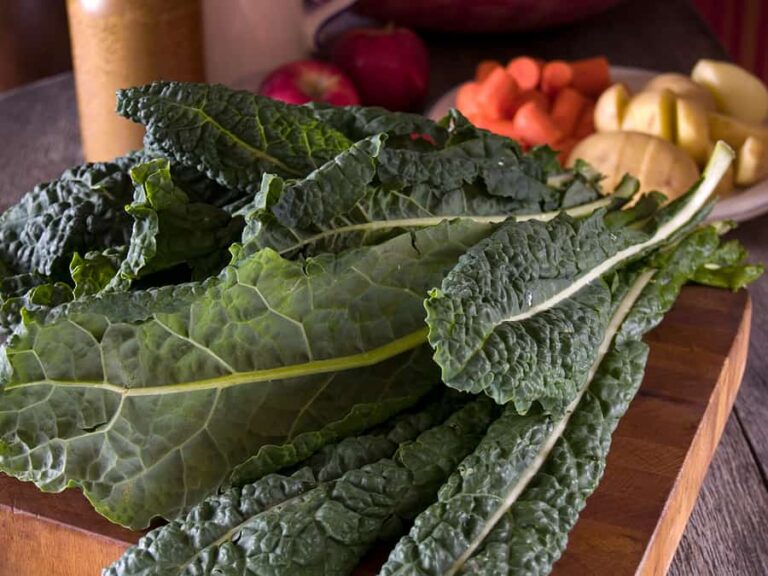How to Harvest and Store Kale
Kale is ready for harvest as soon as the leaves are large enough to eat. Kale matures 55 to 75 days from seed sowing. It is best grown to mature in spring or fall before temperatures climb into the 70°sF. In mild-winter regions, kale will produce new leaves nearly all winter.
Related articles:

When to harvest kale
- Harvest kale as soon as the leaves are large enough to eat. Pick large, outside kale leaves first; leave the center ones to grow on.
- Regular harvest and even watering will keep kale plants producing new tender leaves for several months—as long as the weather stays cool.
- Kale leaves will be sweeter if harvested after frost; cool temperatures cause carbohydrates in the leaves to turn to sugar.
- Kale can survive but not thrive where winters are cold; plants can withstand temperatures as low as 14°F (-10°C).
- In hard freeze regions, grow kale under row covers, plastic tunnels, or in cold frames. When temperatures in the teens are predicted, cover plants to keep the leaves from freezing. Still, frozen leaves can be cooked.
- Kale planted in the spring and grown into the summer will be bitter if hit by summer heat. When summer comes keep roots cool by mulching around plants and make sure plants are well watered; these efforts will improve flavor.

How to harvest kale
- Cut kale leaves one by one as needed with garden scissors or knife or cut away the whole head. If you cut kale leaves as needed (called cut-and-come-again) new leaves will grow from the center of the plant.
- After harvesting kale, wash the leaves thoroughly to remove any soil that may be clinging to the leaves.
How to store kale
- Kale will store for two to three weeks at 32° to 34°F (0°-4°C) and 90 to 95 percent humidity (moist) with some air circulation.
- Wrap leaves in a moist cloth or paper towel and store them in a perforated plastic bag in the vegetable crisper of the refrigerator; this will keep leaves from drying.
- If you cook the whole leaf, the stems will become tender.
🥬 Kale Learning Hub
- Start here: The Ultimate Kale Growing Guide: From Seed to Harvest
- 1. Types and Varieties of Kale
- Different Types of Kale Explained: Curly, Flat, Russian & Tuscan
- Best Kale Varieties for Different Climates
- 2. Planting and Timing
- Kale Seed Starting Tips
- When to Plant Kale for Fall, Winter, and Spring Harvests
- Succession Planting Kale for a Continuous Harvest
- How to Space and Thin Kale for Maximum Yield
- Zone-by-Zone Kale Planting Calendar
- 3. Seasonal Growing
- How to Grow Kale in Cold Climates and Overwinter Successfully
- Can You Grow Kale in Summer? Tips for Heat-Stressed Plants
- 4. Care and Maintenance
- How Much Water Does Kale Need? A Watering Guide
- How to Fertilize Kale for Lush Leaf Growth
- Best Companion Plants for Kale (And What to Avoid)
- How to Prune Kale for Continued Production
- 5. Container Gardening
- How to Grow Kale in Pots: Soil, Spacing, and Care
- 6. Pests and Diseases
- Common Kale Pests and Diseases and Their Natural Controls
- 7. Harvest and Storage
- How to Harvest and Store Kale
- How and When to Harvest Kale Leaves for Best Flavor
- Tips for Extending Kale Harvest Through the Season
- 8. Kale in the Kitchen
- Seven Ways to Serve Kale
Kale articles on Harvest to Table:
Garden Planning Books at Amazon:
- Vegetable Garden Almanac & Planner
- Kitchen Garden Grower’s Guide Vegetable Encyclopedia
- Vegetable Garden Grower’s Guide
- Tomato Grower’s Answer Book
More harvest tips:
Learn when and how to harvest your favorite vegetables for the best flavor and texture. Get storage tips for each crop. Click on the vegetable you are growing below.
- Artichoke
- Arugula
- Asparagus
- Beans
- Beets
- Broccoli
- Brussels Sprouts
- Cabbage
- Cantaloupe — Melons
- Carrots
- Cauliflower
- Celery
- Chard
- Collards
- Corn, Sweet
- Cucumbers
- Eggplant
- Endive and Escarole
- Garlic
- Jerusalem Artichoke
- Kale
- Kohlrabi
- Leeks
- Lettuce
- Melons
- Okra
- Onions
- Parsnips
- Peas
- Peppers
- Potatoes
- Pumpkins
- Radicchio
- Rhubarb
- Rutabaga
- Spinach
- Squash, Summer
- Squash, Winter
- Sunchokes
- Sweet Potato
- Swiss Chard
- Tomatillo
- Tomatoes
- Turnips
- Watermelon







